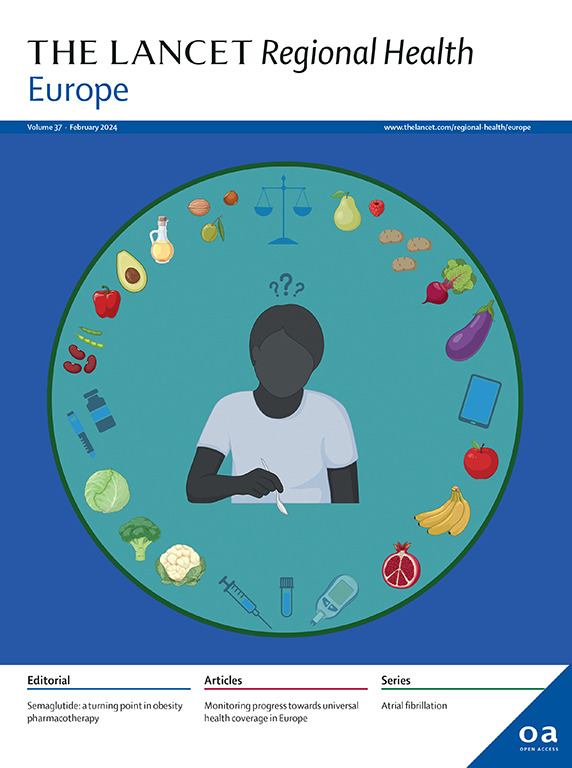2015-2022 年世卫组织欧洲地区的肠道病毒流行情况:世卫组织三个核心脊灰病毒监测系统与欧洲非脊髓灰质炎肠道病毒网络 (ENPEN) 的数据比较
IF 13
Q1 HEALTH CARE SCIENCES & SERVICES
引用次数: 0
摘要
背景:虽然脊髓灰质炎病毒与麻痹性疾病之间的关联已得到充分记录,并通过全球根除脊髓灰质炎行动得到密切监测,但监测其他非脊髓灰质炎肠道病毒在麻痹性和非麻痹性疾病中的传播和作用并没有得到同样的重视。我们已经评估了当前肠道病毒监测系统在根除脊髓灰质炎的最后阶段的作用和潜在有效性。方法我们比较了2015-2022年通过急性弛缓性麻痹(AFP)、临床肠病毒和环境监测系统以及欧洲非脊髓灰质炎肠病毒网络(ENPEN)收集的数据向世界卫生组织(WHO)欧洲区域办事处报告的肠病毒循环和临床关联数据。这项为期8年的研究分析了来自48个欧洲国家报告的确诊肠病毒感染的63659份样本的数据,其中27699份成功分型(43.5%)。这揭示了主要通过ENPEN报告的67种肠道病毒类型的循环(85%;19,712/23,220),而大多数脊髓灰质炎病毒感染通过世卫组织报告(99.9%;4484/4489)。在向世卫组织报告的非脊髓灰质炎肠病毒阳性AFP病例中,只有20%被成功分型(105/544)。与这些病例相关的临床数据强调了麻痹性非脊髓灰质炎肠道病毒感染的严重程度,在同一研究期间,有12人死亡,而脊髓灰质炎病毒感染造成的死亡只有3人。该研究记录了非脊髓灰质炎肠道病毒感染是欧洲瘫痪的常见原因。对从重症患者(包括瘫痪患者)身上发现的所有肠道病毒实施标准化监测和报告,将增强我们对非脊髓灰质炎肠道病毒感染负担的理解,同时不影响脊髓灰质炎病毒监测。本研究由世卫组织欧洲区域办事处资助,并得到比尔和梅林达·盖茨基金会的财政支持。本文章由计算机程序翻译,如有差异,请以英文原文为准。
Enterovirus circulation in the WHO European region, 2015–2022: a comparison of data from WHO's three core poliovirus surveillance systems and the European Non-Polio Enterovirus Network (ENPEN)
Background
While the association of polioviruses with paralytic disease is well-documented and closely monitored via the Global Polio Eradication initiative, monitoring of the circulation and role of other non-polio enteroviruses in paralytic and non-paralytic disease has not received the same priority. We have assessed assess the role and potential effectiveness of the current enterovirus surveillance systems in the final stages of polio eradication.
Methods
We compared data on enterovirus circulation and clinical associations reported to the World Health Organization (WHO) Regional Office for Europe via the acute flaccid paralysis (AFP), clinical enterovirus, and environmental surveillance systems along with that collected by the European Non-Polio Enterovirus Network (ENPEN), 2015–2022.
Findings
This 8-year study analysed data from 63,659 samples from diagnosed enterovirus infections reported by 48 European countries, of which 27,699 were successfully typed (43.5%). This revealed the circulation of 67 individual enterovirus types primarily reported via ENPEN (85%; 19,712/23,220), whereas most poliovirus infections were reported via WHO (99.9%; 4484/4489). Only 20% of non-polio enterovirus positive AFP cases reported to WHO were successfully typed (105/544). Clinical data linked to these cases underscored the severity of paralytic non-polio enterovirus infections with 12 deaths compared to three deaths caused by poliovirus infections during the same study period.
Interpretation
The study documents non-polio enterovirus infections as a frequent cause of paralysis in Europe. Implementation of standardized monitoring and reporting of all enteroviruses identified from severely ill patients, including those with paralysis, would enhance our understanding of the burden of non-polio enterovirus infections without compromising poliovirus surveillance.
Funding
This study was funded by WHO Regional Office for Europe and received financial support from the Bill and Melinda Gates Foundation.
求助全文
通过发布文献求助,成功后即可免费获取论文全文。
去求助
来源期刊

Lancet Regional Health-Europe
Multiple-
CiteScore
19.90
自引率
1.40%
发文量
260
审稿时长
9 weeks
期刊介绍:
The Lancet Regional Health – Europe, a gold open access journal, is part of The Lancet's global effort to promote healthcare quality and accessibility worldwide. It focuses on advancing clinical practice and health policy in the European region to enhance health outcomes. The journal publishes high-quality original research advocating changes in clinical practice and health policy. It also includes reviews, commentaries, and opinion pieces on regional health topics, such as infection and disease prevention, healthy aging, and reducing health disparities.
 求助内容:
求助内容: 应助结果提醒方式:
应助结果提醒方式:


